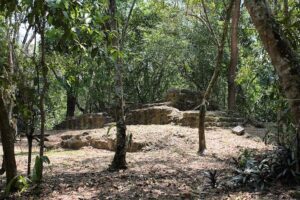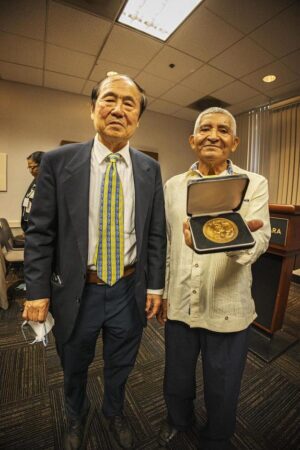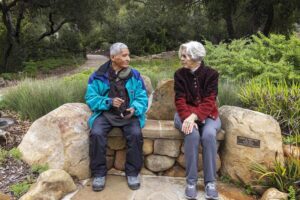
Most of the heroes on this planet go unsung and unrecognized. They represent a number that cannot be possibly counted.
That is because their acts, contributions and knowledge often get lost in the bigger picture of world-over events and actions of the few who, for a variety of reasons, capture the notice of the media and those who have the power to move and shape what the world sees as valuable and important.
Occasionally, however, the cloud of obscurity hiding some of these untold heroes is lifted. Such was the case when, on January 13, 2023, a small delegation of representatives from Belize were invited to attend a special event hosted by the University of California, Santa Barbara, to highlight the environment-sustaining principles of a practice called Maya Forest Gardening, and to recognize the achievement of Master Gardener Narciso Torres with the highest award that UC Chancellor Henry Yang can bestow: the Chancellor’s Medal.
Dr. Anabel Ford, an archaeologist who has directed decades of research at the archaeological site of El Pilar on the Belize-Guatemala border and who is President of Exploring Solutions Past ~ The Maya Forest Alliance and Director of ISBER/MesoAmerican Research Center at UC Santa Barbara, explains why.

Chancellor Henry Yang (left) with Narciso Torres (right) holding the Chancellor’s Medal. Image courtesy Macduff Everton
“We have had delegations in the past and were able to collaborate to showcase the importance of local ecological knowledge,” said Ford. “Master Forest Gardener Narciso Torres has worked with our team in the Maya forest for 40 years—ka’ katun in Mayan—and has helped us at El Pilar understand the nature of ancient Maya settlement patterns and land use. He sustains his family and conserves natural resources at his forest garden, Chak Ha Kol, in Belize.”
Ford and others like her believe that this practice holds solutions that can be applied to modern-day environmental problems and generate a new way of thinking about our environment.
For more details about Narciso, the Maya Forest Garden and the ancient site of El Pilar, see the article, The Milpa Way, a major feature article previously published in Popular Archaeology Magazine.
________________________

Narciso and Anabel at the Santa Barbara Botanic Garden. Image courtesy Macduff Everton
________________________

A Maya house site at El Pilar (Belize side). The El Pilar story has shown that even the process of discovering the ancient Maya can be done sustainably. Creative Commons CC0 1.0 Universal Public Domain Dedication, Wikimedia Commons
________________________
Advertisement




